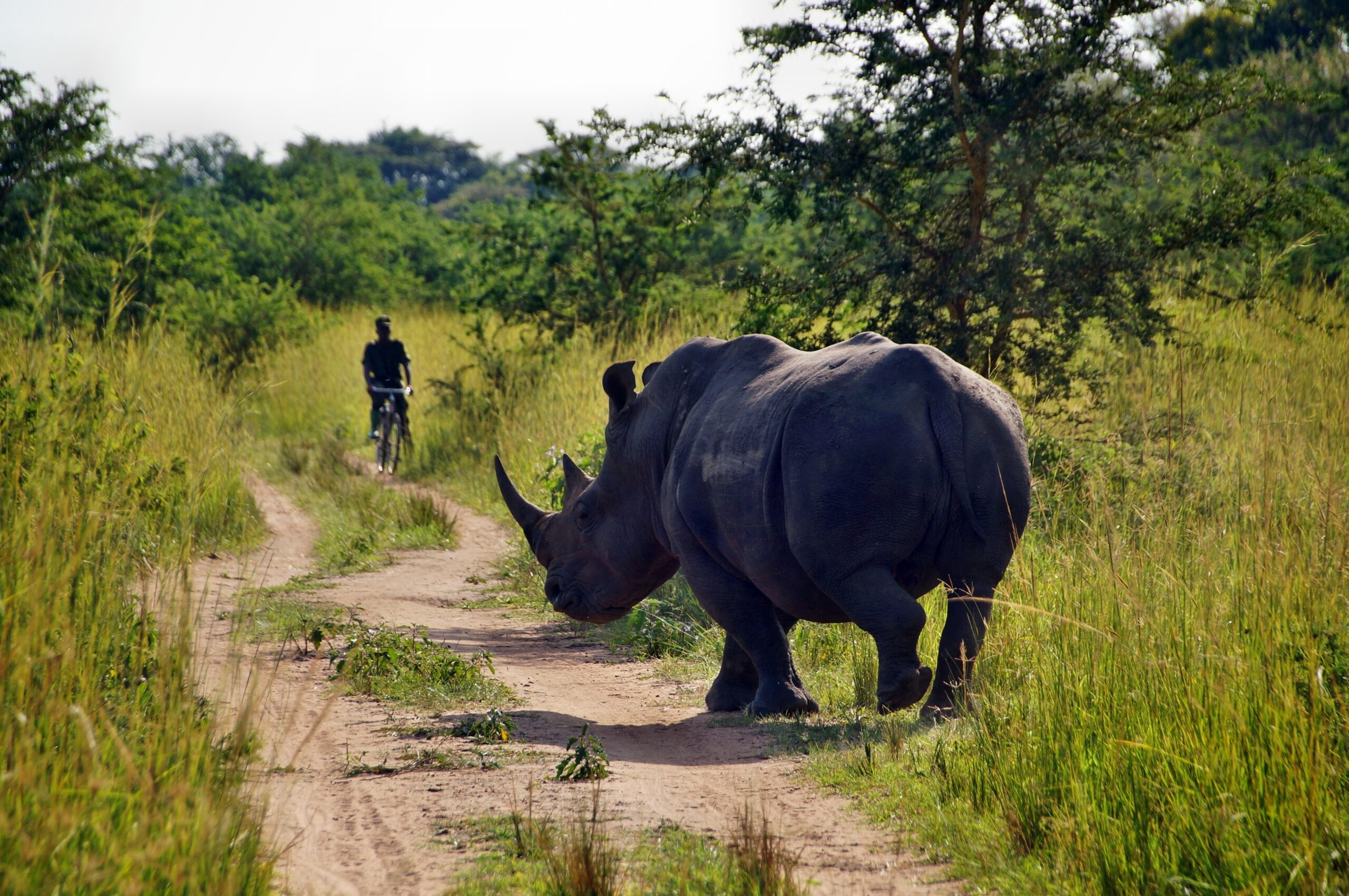Interview with our local partner in Panama
1 October 2025

One rarely hears about the humble rhinoceros today without mention of its threat of extinction. These burly, territorial creatures which once wandered in their millions across Africa and Asia have had their numbers slashed irrevocably due to poaching, arguably becoming the most targeted mammal of recent times. In fact, conservationists suggest only 30,000 are left living in the wild.
Thankfully, massive efforts have been made to halt the rhino’s risk of disappearance. Widespread conservation programs in Africa have caused a boost in numbers of Black rhino; and most encouragingly, the Southern White rhino, which has now emerged as the most populous rhino species after dwindling to a mere 50-100 in the early 1900s.
 Rhino Fund Uganda is one such organisation committed to the rhino’s cause. With support from the Uganda Wildlife Authority they have opened Ziwa Rhino Sanctuary – a safe and secure haven to help protect, rehabilitate and breed rhinos for eventual release. We spoke to Angie Genade, Executive Director of RFU, to tell us about her important work in Uganda.
Rhino Fund Uganda is one such organisation committed to the rhino’s cause. With support from the Uganda Wildlife Authority they have opened Ziwa Rhino Sanctuary – a safe and secure haven to help protect, rehabilitate and breed rhinos for eventual release. We spoke to Angie Genade, Executive Director of RFU, to tell us about her important work in Uganda.
Can you tell us a little about Rhino Fund Uganda? How long have you been a part of it? We have existed since 1997, while the Ziwa Sanctuary was opened in 2005. Our primary objective is to reintroduce rhinos to Uganda – through awareness, education, and breeding programmes. I have been the Executive Director since 2008.
How many rhinos does the RFU work with? At the moment there are 19 rhinos, with two births expected this year, three more expected next year and three females currently mating.
Are there any rhinos that are particularly special to you? Justice – a five year old male that sadly died was everyone’s favourite rhino. He had such a kind nature. I would say that Bella, an adult female is now the most loved rhino.
RFU is a shining example of how conservation can benefit local communities as well as wildlife. Could you tell us about the work you do with farmers and schools in the area? We believe conservation should be a community-wide effort, and we do all we can to give back to the local people. As an example, we house all our staff as well as their families – but this originally meant their children lived far from school. So we renovated an old building and turned it into the Hakuna Matata Primary School in 2010. It currently teaches 75 students and we’re extremely proud of it. In addition to this, we’ve set up agreements with neighbouring cattle farmers to share land and resources, we offer work to underprivileged orphan students, and we’ve funded increased water supply in the area. There is plenty of information on our website if you want to read more.

Any special moments you’ve experienced working with rhinos since the sanctuary opened? Absolutely the first rhino birth we experienced in June 2009 was very special. He was the first male to be born in Uganda for 30 years, his mother was from the USA and his father, Kenyan – so we named him Obama. Then of course the birth of our first female, Malaika, which we were able to film.
Why is it so important that we protect these animals? Well, all animals are important to conservationists – however rhinos are the second largest land mammal and a mega herbivore, therefore they have a very important role in biodiversity. Once you start working with these animals and understanding them; identifying their independent natures, you can’t not fall absolutely in love with them and become very passionate about their safety and survival.
How can people help Rhino Fund’s conservation efforts? Sadly it is all about being able to make ends meet every year, which is not easy. We always require donations – financial or in kind. Adopting or naming a rhino is a nice way of assisting, as you pay for this but it is also very personal.
What’s next for Rhino Fund Uganda? How do you envisage the project expanding in the future? We are currently discussing the need for a second sanctuary in Uganda. In about five years’ time we will have enough rhinos to be able to put a founder herd in another sanctuary. This is really exciting for us. However, we have to do this with Uganda Wildlife Authority and the Government. So, we’re still making plans at this point.
And, we’ve got to ask, what would be your top three dream travel destinations around the world? Haha. I am not an avid traveller – I find myself stuck on the sanctuary so have not been off the African continent. However, I grew up in Namibia and must say it is a very beautiful and diverse country. So my three choices would have to be countries I know: Namibia, South Africa and Uganda (not necessarily in this order though, they are all equal to me).
If you’d like to find out more about the RFU or adopt a rhino at Ziwa Sanctuary, visit www.rhinofund.org. To integrate rhinos into a fantastic, tailor-made trip to Uganda, take a look at our destination page.
Explore all featured destinations
Join our mailing list for travel inspiration, trip recommendations, and insights from our local experts.